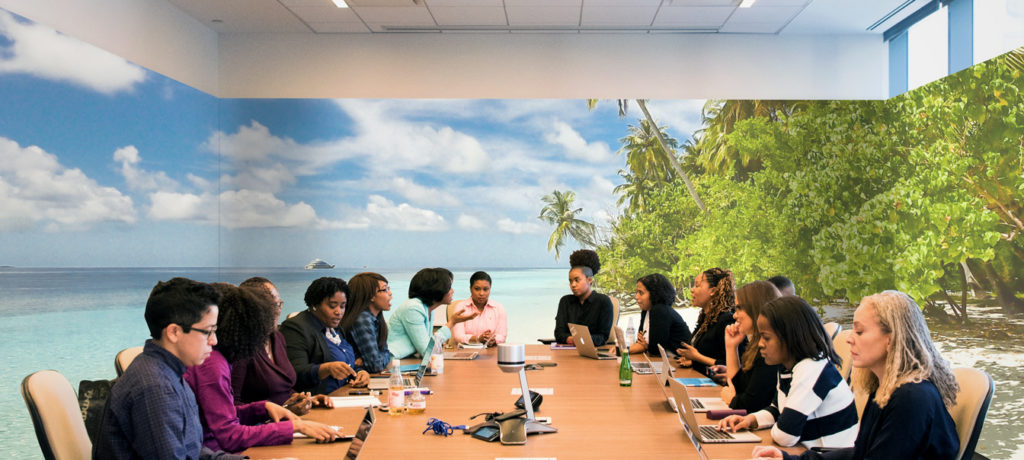The mobilisation of all the senses and the possibility of interacting collectively are real levers to reinforce the creative dynamic and sublimate the simulated experiences. All audiences There are 2 main types of use for immersive rooms… Immersive multi-sensory environments are a great tool to boost the creativity of a team, explore possibilities, prototype and test customer experiences. The mobilisation of all the senses and the possibility of interacting collectively are real levers for strengthening the creative dynamic and sublimate the simulated experiences. Thanks to the immersive room The Room For The Senses, the research institute REPERES and AGROPARISTECH are evaluating the impact of the context on the appreciation of food products. A test of non-alcoholic beer conducted in two immersive environments environments (beach and nightclub), compared to a measurement in sensory boxes, has thus made it possible to make product-context associations and to validate the power of immersion (suppression of the impact of immersion and time of tasting on product appreciation) Click here to read the summary of Survey agroparistech reperes (march 2017) sciencedirect.com link http://www.offremedia.com/cas-de-linstitut-reperes-trophee-argent-dans-la-categorie-innovation-dans-le-recueil-de-donnees-aux … pic.twitter.com/w7Qpqmh5VN Immersing an audience in a multi-sensorial experience will maximise the impact of communication operations. The experiences proposed in this way will be stimulating and highly memorable, capable of strengthening the link with the target audience in the long term. CREATING AND EXPERIMENTING
Immersive multi-sensory environments are a great tool for boosting team creativity, exploring possibilities, prototyping and testing customer experiences.
A space to experience engaging the senses
Key advantages
The different settings of multi-sensory spaces
2 types of use: event and permanent
Multiple possibilities of immersive and multi-sensory solutions
Transformation of a place into an immersive space
Immersive booth
Immersive spaces – Square models
Use cases
 Market research, Brainstorming and R&D
Market research, Brainstorming and R&D
Example of use case
SILVER TROPHY
Innovation in the data collection at the Trophées Études et Innovations 2017 – Printemps des Études
A multi-sensory immersive room to measure the effects of the context
 Experiential marketing, Events
Experiential marketing, Events
The possibilities for simulations are immense: real or imaginary places in computer-generated images, interactivity of the environment via connected objects, play on temporality (living through a day in a few minutes, moving from one season to another, etc.).
Introduction to the immersive and multi-sensory spaces
Immersive and multi-sensory spaces
DescriptionOfferUse casesVideo























